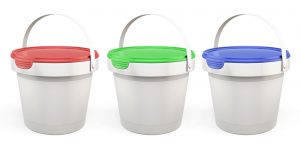The composition of your retirement portfolio affects your ability to support your lifestyle after you retire as well as what you can give away to loved ones.
Many financial managers have recently found that retirees’ assets are in pre-tax accounts, also known as qualified plans. However, this has an additional consequence when it’s time to make withdrawals to cover your living expenses. You would need to pull out additional funds to cover the tax bill that comes with it. 
Using a bucket strategy when planning for retirement can help to address this problem. A short-term bucket that has up to five years of retirement needs should be tapped without a major taxable event.
The second bucket should be filled with long-term fixed-income assets and after-tax equity. This bucket could be very important for generating taxable events, given the appreciation of assets. However, if the principle is all after tax dollars, this burden is reduced. The third bucket should be filled with 401(k), pre-tax retirement accounts, and traditional IRA accounts.
These are all subject to RMD rules that begin at age 70 and half and the distributions are taxed at ordinary income rates. The ratio of assets in your third and second buckets is determined by whether or not you have already saved enough to achieve your lifestyle goals in retirement. If you have more resources than you expect to need for your retirement goals, the pre-tax assets might be higher and you should consult directly with an experienced estate planning lawyer to talk about how you will pass on these assets to your loved ones in the future.
